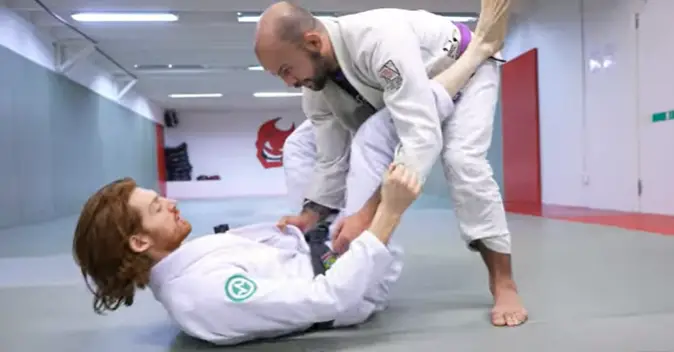Pulling guard is one of the most divisive topics in the whole of BJJ, with many wrestlers and Judoka who enter the sport being deeply set against their opponents being able to take the fight to the ground without the effort of working for a takedown. Of course, many strictly BJJ competitors see nothing wrong with the technique and are more than happy to fight from their back, primarily because the most commonly-used rules of our sport do nothing to penalize pulling guard and if that’s where you are strongest, it can be the tactically smart move to make.
The main criticism comes from athletes who transfer over from other grappling styles where guard pulling isn’t a thing. In both wrestling and Judo, the primary focus is on taking the opponent down and holding them there, with submissions being completely banned in wrestling and heavily disincentivized in Judo thanks to a limited amount of time being spent on the ground. But in Jiu-Jitsu, the submission is king. Here, it doesn’t really matter how you take someone down or even if you do it at all, all that matters is what you’re able to do once you get to the ground.
For that reason, it makes sense for guard pulling to be an option. It’s not as if it’s a completely unstoppable technique that ends all matches, instead it’s just a smart way to go to the ground on your own terms instead of risking being taken down and put into a disadvantageous position. In the most common ruleset used in Jiu-Jitsu (IBJJF) guard pulling neither earns nor loses you any points, while a secured takedown earns you two points. As a result, guard pulling is only as effective as a takedown (in terms of points scored) if followed up by a sweep to top position, which will then score you two points. In this sense, guard pulling in BJJ is not encouraged, but it isn’t penalized either.
Under other rulesets like ADCC, it is actively penalized with a negative point instead but this still doesn’t remove it from matches altogether. In fact, if a competitor is so confident in their guard then sacrificing the negative point can become worth it in order to sweep to the top position or even submit the opponent from their back. Pulling guard can still become the smart option if that’s where your strengths lie and removing it from the sport altogether would certainly be a bad idea.
It’s true that some grapplers use pulling guard as a crutch to not work on their takedowns, but this simply isn’t possible at the highest levels of the sport. Even the best competitors on the planet have had to develop a decent standing grappling game in order to stay at that level, and to have the ability to choose what path to the ground to take. At the end of the day, guard pulling is and should always be a part of Jiu-Jitsu, no matter what the wrestlers and Judoka think.
For those who aren’t quite sure yet on how to pull guard effectively, Keenan Cornelius has an excellent video on the subject uploaded to his official YouTube channel:













